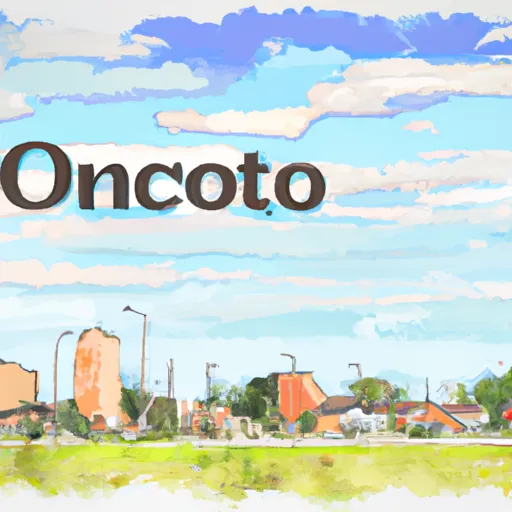-
 Snoflo Premium
Snoflo Premium
Get unlimited access to all our content
With no Ad interruptions! - Start Your Free Trial Login with existing account
Oconto
Eden Index
Climate
7.3
•
Recreation
2.3
•
Community
•
Safeguard
3.7/10

Oconto, Nebraska is a small town located in Custer County. The town experiences a continental climate characterized by hot summers and cold winters. Summers are typically warm with average temperatures ranging from 70°F to 90°F, while winters are cold with temperatures ranging from 10°F to 30°F. Precipitation is evenly distributed throughout the year, with an average annual rainfall of around 25 inches.
Hydrologically, Oconto is situated near the Middle Loup River, which provides opportunities for water-based recreation such as fishing, canoeing, and kayaking. The river is known for its diverse fish species, including trout, catfish, and walleye.
Additionally, Oconto offers various outdoor recreation opportunities. The surrounding area is abundant in natural beauty, with opportunities for hiking, camping, and bird-watching. Nearby national forests and state parks provide additional recreational options for nature enthusiasts.
What is the Eden Index?
The Snoflo Eden Index serves as a comprehensive rating system for regions, evaluating their desirability through a holistic assessment of climate health, outdoor recreation opportunities, and natural disaster risk, acknowledging the profound impact of these factors on livability and well-being.
Climate Health Indicator (CHI): 7.3
Oconto receives approximately
561mm of rain per year,
with humidity levels near 82%
and air temperatures averaging around
10°C.
Oconto has a plant hardyness factor of
5, meaning
plants and agriculture in this region thrive during a short period during spring and early summer. Most
plants will die off during the colder winter months.
By considering the ideal temperature range, reliable water supplies, clean air, and stable seasonal rain or snowpacks, the Climate Health Indicator (CHI) underscores the significance of a healthy climate as the foundation for quality living.
A healthy climate is paramount for ensuring a high quality of life and livability in a region, fostering both physical well-being and environmental harmony. This can be characterized by ideal temperatures, reliable access to water supplies, clean air, and consistent seasonal rain or snowpacks.
Weather Forecast
Streamflow Conditions
Middle Platte
Area Rivers
Middle Platte
Snowpack Depths
Middle Platte
Reservoir Storage Capacity
Middle Platte
Groundwater Levels
Recreational Opportunity Index (ROI): 2.3
The Recreational Opportunity Index (ROI) recognizes the value of outdoor recreational options, such as parks, hiking trails, camping sites, and fishing spots, while acknowledging that climate plays a pivotal role in ensuring the comfort and consistency of these experiences.
Access to outdoor recreational opportunities, encompassing activities such as parks, hiking, camping, and fishing, is crucial for overall well-being, and the climate plays a pivotal role in enabling and enhancing these experiences, ensuring that individuals can engage in nature-based activities comfortably and consistently.
Camping Areas
| Campground | Campsites | Reservations | Toilets | Showers | Elevation |
|---|---|---|---|---|---|
| Lexington City Park | None | 2,394 ft | |||
| Tomahawk Municipal Park | None | 2,485 ft | |||
| Victoria Springs State Rec Area | 80 | 2,525 ft | |||
| Pressey State Wildlife Area | None | 2,429 ft | |||
| West Side Park - Beaver City | 4 | 2,175 ft | |||
| Gallagher Canyon State Rec Area - Cozad | 25 | 2,664 ft | |||
| Morgan Municipal Park | 30 | 2,547 ft | |||
| George Mitchell RV Park | 10 | 2,058 ft |
Catastrophe Safeguard Index (CSI):
The Catastrophe Safeguard Index (CSI) recognizes that natural disaster risk, encompassing floods, fires, hurricanes, and tornadoes, can drastically affect safety and the overall appeal of an area.
The level of natural disaster risk in a region significantly affects safety and the overall livability, with climate change amplifying these risks by potentially increasing the frequency and intensity of events like floods, fires, hurricanes, and tornadoes, thereby posing substantial challenges to community resilience and well-being.
Community Resilience Indicator (CRI):
The Community Resilience Indicator (CRI) recognizes that education, healthcare, and socioeconomics are crucial to the well-being of a region. The CRI acknowledges the profound impact of these elements on residents' overall quality of life. By evaluating educational resources, healthcare accessibility, and economic inclusivity, the index captures the essential aspects that contribute to a thriving community, fostering resident satisfaction, equity, and social cohesion.

